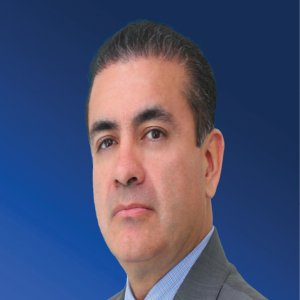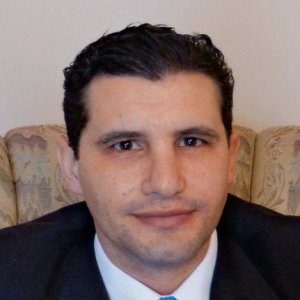The Role of IMP in a New Open Market

STORY INLINE POST
Q: What will be the main changes in the role IMP plays in the industry and in its relationship with PEMEX?
A: IMP has been experiencing a structural change since before the Energy Reform was passed, which means that we will have to abandon our familiar ways of doing things. Hopefully, the country will see many new operators, which will alter IMP’s future landscape. There is the chance of losing the market share that PEMEX has today, but at the same time it has the chance to behave as a modern company and expand its market. PEMEX should rely on its use of technology to differentiate itself and its activities from other players. There will be a significant interest in new technological advancements in order to add competitiveness, productivity, and efficiency to the company’s operations. This means IMP will play an unprecedented role.
Q: How will IMP compete with companies armed with much larger R&D budgets?
A: IMP’s current activities are centered on recognizing the opportunities that lie before us. The large budgets that companies such as ExxonMobil and BP have for R&D are something we have to face. President Peña Nieto stated in the National Development Plan that the economic resources that should be invested in such areas would amount to 1% of the GDP. I am confident budgets will increase in a gradual way as we cannot go from a MX$2 billion (US$150 million) budget to a MX$5 billion (US$375 million) budget in just one year as we lack certain elements that need to be developed. It is now time to take action on the technology front. IMP has announced plans for the construction of a technology center for deepwater operations, a center intended to scale up different technologies for the downstream segment, and a technology center for EOR in different fields. Of course, this means we have to immediately face the problem of developing specialized and skilled human resources. This year, between 20 and 40 outstanding Mexican students will be going to the best universities in North America and Europe in order to get postgraduate degrees as part of this effort. Along the same line, we have announced an aggressive program to incorporate national talents, which will begin with the creation of 30 new positions at IMP. We are aware of the increasing competition, and we are taking advantage of our knowledge in exploring the Mexican market to get what we need. For instance, IMP has a strong knowledge of Mexico’s subsurface, which nobody else in the country possesses. This gives us an important advantage over other companies that will enter the country.
Q: How will IMP continue adding value to PEMEX in an open market?
A: Technology can give any operator a competitive advantage and most companies have come to realize this. There is a huge difference in the market value of the companies that develop technology as compared to those that do not. In the energy sector, companies such as ExxonMobil and Chevron are heavily investing in technology. They possess a refined knowledge of their different processes, and by combining their findings with third parties they can add more value to their activities as compared to a model in which all technology is acquired. PEMEX could buy technology from other companies, but this is precisely what it did in the past. In an open market PEMEX has to be highly competitive, so continuously finding new ideas and new processes for its different operations means continuously adding value.
Q: What is IMP’s task in terms of commercializing your research changing after the Energy Reform?
A: IMP has three areas which will carry out research and develop technology: upstream, downstream, and the scaling up of our accomplishments in these segments. While we do this, we also have an internal service company which will commercialize what is done at the institute. According to the model proposed in the secondary laws, IMP will have a greater focus on services and commercialization, which will account for 80% of the institute’s activities. The research areas and the technology centers will be passed on to PEMEX. This will provide connectivity inside the operator, allowing it to understand problems first-hand and to link them to the innovative technologies without having to sign contracts. Regarding patents and intellectual property rights, the exclusive rights to develop and commercialize products and technologies are in the hands of IMP’s service and commercialization division. We are licensing our products because we do not have distribution channels. In the model that the institute is adopting, we will depend on different commercial and technological alliances with third parties to expand our horizons, which will give us access to technologies that we do not have today. IMP has already signed three technological alliances. The first alliance is with Clariant and is focused on chemical products. The second one is with Reno Gas, which will also operate one of the labs in the deepwater technology center in Veracruz and we will commercialize products together. The third one is with GE, with whom we are developing a highly successful device for wells and its associated electronic components, the Venturi Flow Pattern Improver.
Q: What will be the relationship between IMP, PEMEX, and the private sector in an open market?
A: The question of whether or not IMP will be able to offer services to third parties has already been raised. This is an interesting question because IMP has plenty of knowledge about the Mexican sub-surface. Anyone can go through a learning curve, but this takes time. By having IMP’s expertise, this timeframe could be shortened. If a service requested by third parties creates a conflict with PEMEX, IMP will certainly not be offering this service. However, IMP would be happy to help a company interpret an exploration block if PEMEX is not interested in that particular block. If PEMEX was interested in this particular block along with third parties that were asking us for assistance, which would create a conflict. The course of action needs to be clear as the institute cannot afford to be caught in the middle of a conflict.
Q: What will be the roles of IMP and the Hydrocarbon Fund as catalysts for technology development?
A: Assuming that the secondary laws are passed as they are currently drafted, PEMEX will take care of research and technology. Therefore the oil company should also have access to funding, when a part of PEMEX’s revenues will go to the Hydrocarbon Fund. These funds should stimulate the country’s R&D capabilities but we also need to work with others to increase the speed at which we gain knowledge and improve technologies. I hope the secondary legislation gives PEMEX direct access to these resources. Specific targets and determined timeframes should be established for researchers to deliver results. R&D is not just about registering new patents or printing results in international publications. If we really want to add value to operators, we need to increase recovery factors, change well decline rates, decrease the amount of leaks in pipelines, and reduce the amount of energy used in facilities. This is the true value of a research organization, and we want an efficient IMP committed to changing the future.





















